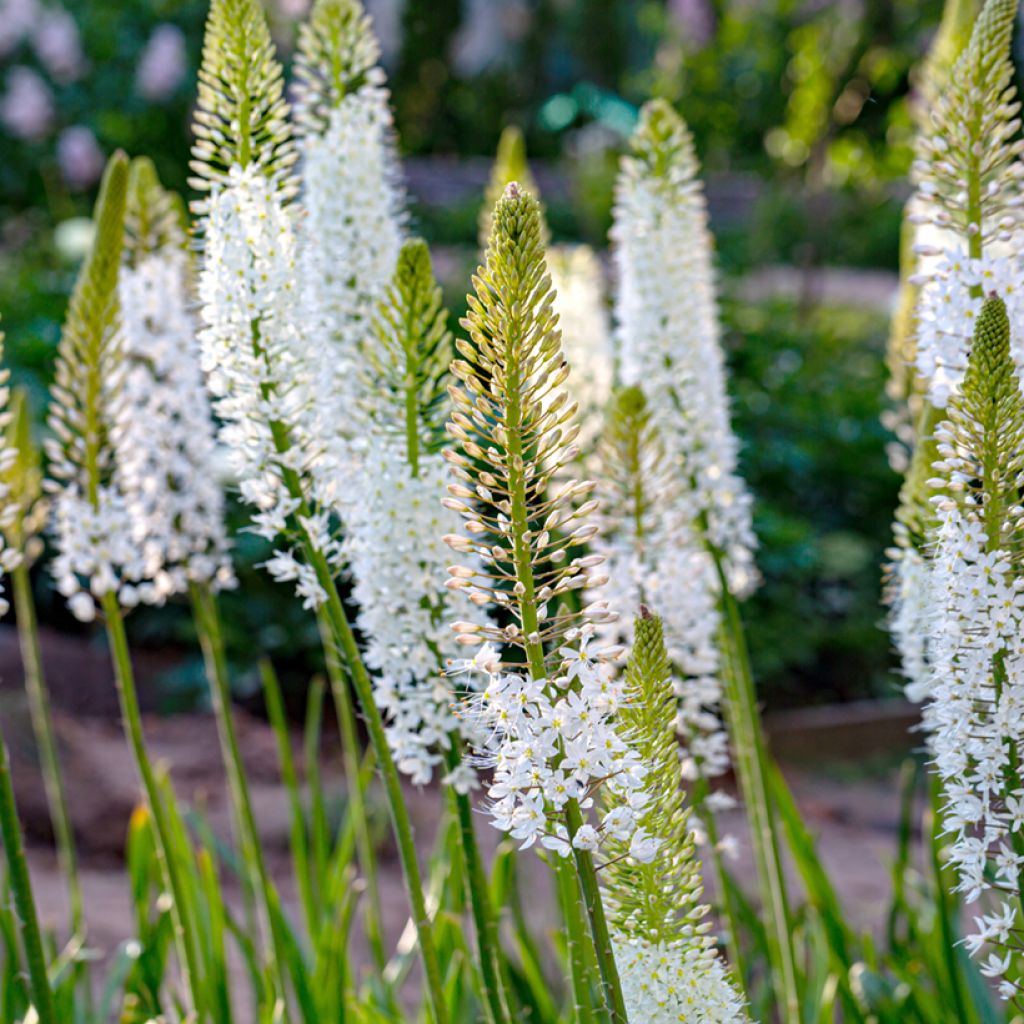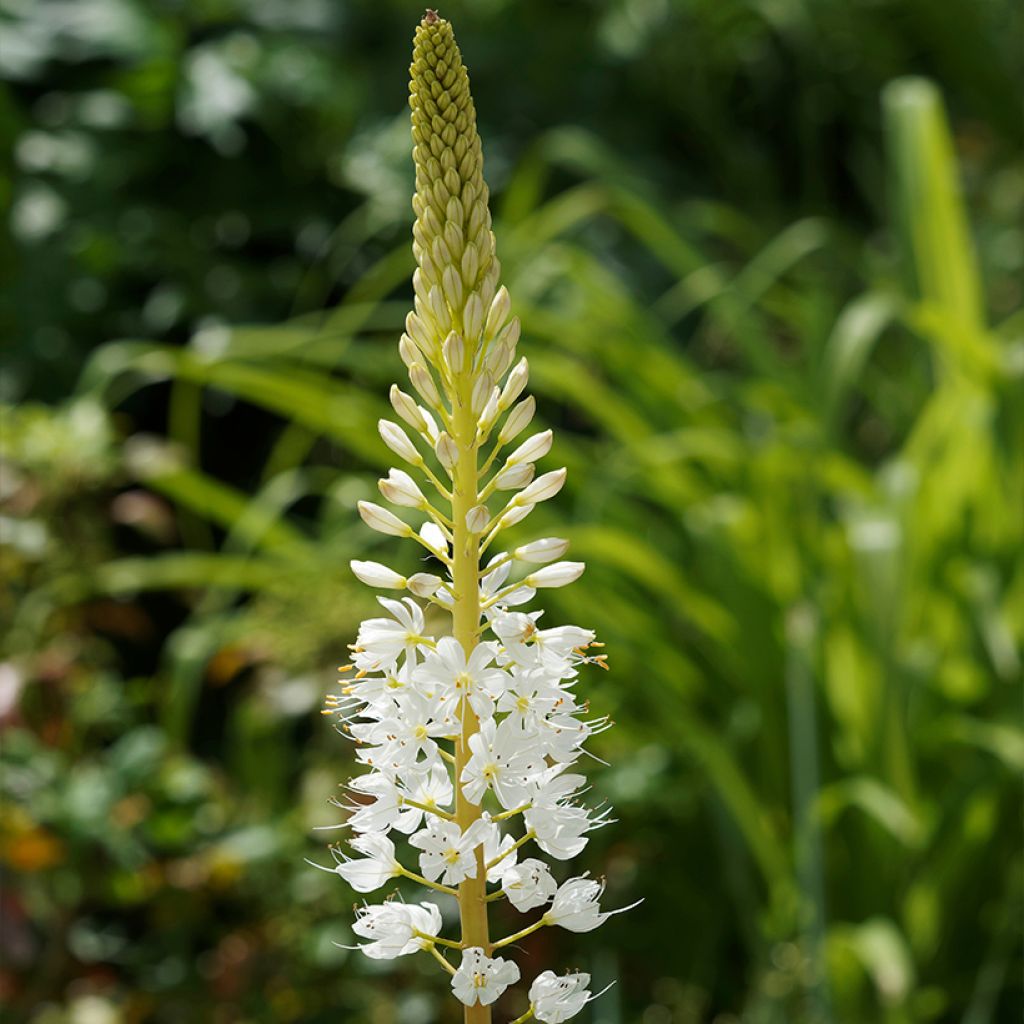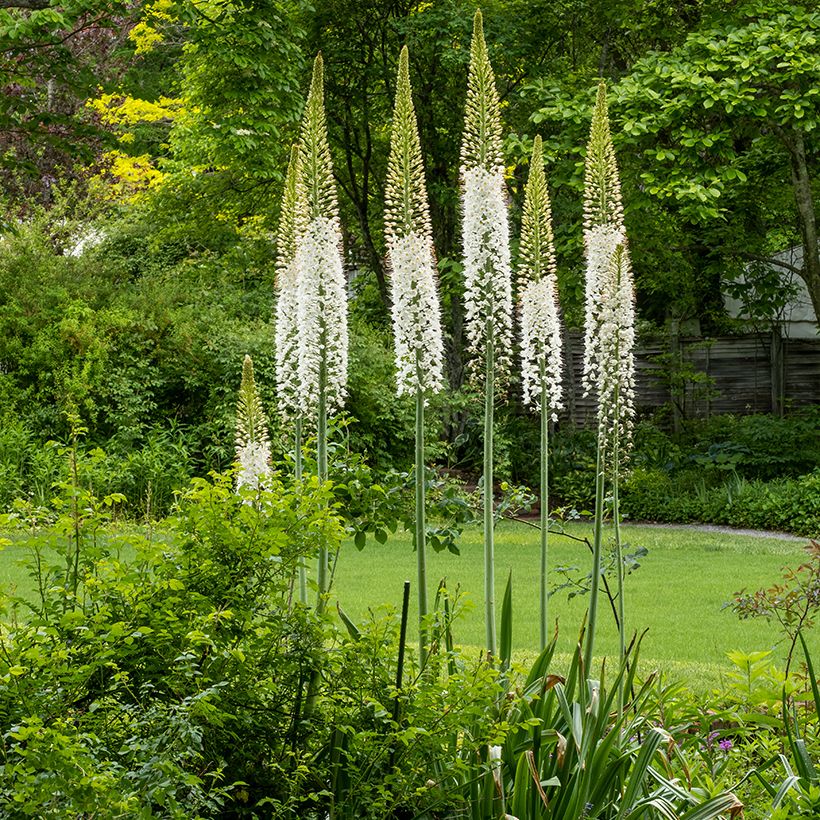

Eremurus himalaïcus - Foxtail Lily


Eremurus himalaïcus - Foxtail Lily


Eremurus himalaïcus - Foxtail Lily


Eremurus himalaïcus - Foxtail Lily


Eremurus himalaïcus - Foxtail Lily


Eremurus himalaïcus - Foxtail Lily


Eremurus himalaïcus - Foxtail Lily


Eremurus himalaïcus - Foxtail Lily
Eremurus himalaïcus - Foxtail Lily
Eremurus himalaïcus
Himalayan Desert Candle, Foxtail Lily
This plant carries a 6 months recovery warranty
More information
We guarantee the quality of our plants for a full growing cycle, and will replace at our expense any plant that fails to recover under normal climatic and planting conditions.
From €5.90 for pickup delivery and €6.90 for home delivery
Express home delivery from €8.90.
From €5.90 for pickup delivery and €6.90 for home delivery
Express home delivery from €8.90.
Does this plant fit my garden?
Set up your Plantfit profile →
Description
The Eremurus himalaïcus, also known as the Steppe Lily or Himalayan Foxtail Lily, is a fleshy-rooted perennial plant that forms a clump in summer. It is one of the early varieties of Eremurus. In May, clusters of 70 to 100 cm (28 to 39in) long are composed of hundreds of small white star-shaped flowers, measuring 2 to 3 cm (1in) in diameter. The flowers bloom from bottom to top, allowing the plant to have a flowering over several weeks.
The Desert Lily, native to rocky meadows in Kashmir and the northwest Himalayas, can reach a height of 2 m (7ft). It is a plant adapted to continental climate. The bulb of the Eremurus resembles a small octopus with its 20 cm (8in) diameter. It is more of a tuberous stump composed of roots all around than a bulb. This stump produces ribbon-like leaves (the lamina, the enlarged part of the leaf, resembling a ribbon) measuring 20 to 30 cm (8 to 12in) long. The leaves are deciduous. They wither when the first flowers emerge. That's why it is suitable for perennial flower beds that will hide its base, but the flower bed should not be too compact to avoid suffocating it. It is a plant with excellent hardiness. This species is also the best suited for warmer regions.
This outdoor plant can be found in groups or as an individual specimen. It enhances homes when placed in a vase. It can also be arranged in borders, rock gardens, as well as in containers for small gardens.
Report an error about the product description
Eremurus himalaïcus - Foxtail Lily in pictures






Plant habit
Flowering
Foliage
Botanical data
Eremurus
himalaïcus
Liliaceae
Himalayan Desert Candle, Foxtail Lily
Himalayas
Planting and care
Plant Eremurus Himalaicus during the months of September-October in a sunny location and sheltered from the wind to prevent damage to the flower stalks. This species is best suited to warm regions. Place it in a rich, fertile, moist but well-drained soil. If the soil is not well-drained enough, you can mix in some sand during planting as well-drained soil promotes better root development. Plant the stumps in autumn at a depth of 7 cm (3in), no more, as it needs to be quickly warmed up when the growing season arrives. Protect the plant from winter moisture, which is fatal to it, by covering it with compost without covering the collar. The young shoots should be protected with a dry mulch. The plant, which is well anchored in the soil, does not require staking. Eremurus can be attacked by slugs, so it is necessary to be careful.
Planting period
Intended location
Care
-
, onOrder confirmed
Reply from on Promesse de fleurs
Haven't found what you were looking for?
Hardiness is the lowest winter temperature a plant can endure without suffering serious damage or even dying. However, hardiness is affected by location (a sheltered area, such as a patio), protection (winter cover) and soil type (hardiness is improved by well-drained soil).

Photo Sharing Terms & Conditions
In order to encourage gardeners to interact and share their experiences, Promesse de fleurs offers various media enabling content to be uploaded onto its Site - in particular via the ‘Photo sharing’ module.
The User agrees to refrain from:
- Posting any content that is illegal, prejudicial, insulting, racist, inciteful to hatred, revisionist, contrary to public decency, that infringes on privacy or on the privacy rights of third parties, in particular the publicity rights of persons and goods, intellectual property rights, or the right to privacy.
- Submitting content on behalf of a third party;
- Impersonate the identity of a third party and/or publish any personal information about a third party;
In general, the User undertakes to refrain from any unethical behaviour.
All Content (in particular text, comments, files, images, photos, videos, creative works, etc.), which may be subject to property or intellectual property rights, image or other private rights, shall remain the property of the User, subject to the limited rights granted by the terms of the licence granted by Promesse de fleurs as stated below. Users are at liberty to publish or not to publish such Content on the Site, notably via the ‘Photo Sharing’ facility, and accept that this Content shall be made public and freely accessible, notably on the Internet.
Users further acknowledge, undertake to have ,and guarantee that they hold all necessary rights and permissions to publish such material on the Site, in particular with regard to the legislation in force pertaining to any privacy, property, intellectual property, image, or contractual rights, or rights of any other nature. By publishing such Content on the Site, Users acknowledge accepting full liability as publishers of the Content within the meaning of the law, and grant Promesse de fleurs, free of charge, an inclusive, worldwide licence for the said Content for the entire duration of its publication, including all reproduction, representation, up/downloading, displaying, performing, transmission, and storage rights.
Users also grant permission for their name to be linked to the Content and accept that this link may not always be made available.
By engaging in posting material, Users consent to their Content becoming automatically accessible on the Internet, in particular on other sites and/or blogs and/or web pages of the Promesse de fleurs site, including in particular social pages and the Promesse de fleurs catalogue.
Users may secure the removal of entrusted content free of charge by issuing a simple request via our contact form.
The flowering period indicated on our website applies to countries and regions located in USDA zone 8 (France, the United Kingdom, Ireland, the Netherlands, etc.)
It will vary according to where you live:
- In zones 9 to 10 (Italy, Spain, Greece, etc.), flowering will occur about 2 to 4 weeks earlier.
- In zones 6 to 7 (Germany, Poland, Slovenia, and lower mountainous regions), flowering will be delayed by 2 to 3 weeks.
- In zone 5 (Central Europe, Scandinavia), blooming will be delayed by 3 to 5 weeks.
In temperate climates, pruning of spring-flowering shrubs (forsythia, spireas, etc.) should be done just after flowering.
Pruning of summer-flowering shrubs (Indian Lilac, Perovskia, etc.) can be done in winter or spring.
In cold regions as well as with frost-sensitive plants, avoid pruning too early when severe frosts may still occur.
The planting period indicated on our website applies to countries and regions located in USDA zone 8 (France, United Kingdom, Ireland, Netherlands).
It will vary according to where you live:
- In Mediterranean zones (Marseille, Madrid, Milan, etc.), autumn and winter are the best planting periods.
- In continental zones (Strasbourg, Munich, Vienna, etc.), delay planting by 2 to 3 weeks in spring and bring it forward by 2 to 4 weeks in autumn.
- In mountainous regions (the Alps, Pyrenees, Carpathians, etc.), it is best to plant in late spring (May-June) or late summer (August-September).
The harvesting period indicated on our website applies to countries and regions in USDA zone 8 (France, England, Ireland, the Netherlands).
In colder areas (Scandinavia, Poland, Austria...) fruit and vegetable harvests are likely to be delayed by 3-4 weeks.
In warmer areas (Italy, Spain, Greece, etc.), harvesting will probably take place earlier, depending on weather conditions.
The sowing periods indicated on our website apply to countries and regions within USDA Zone 8 (France, UK, Ireland, Netherlands).
In colder areas (Scandinavia, Poland, Austria...), delay any outdoor sowing by 3-4 weeks, or sow under glass.
In warmer climes (Italy, Spain, Greece, etc.), bring outdoor sowing forward by a few weeks.



































